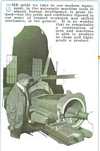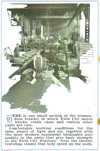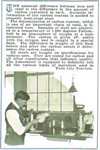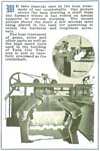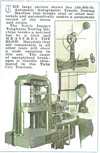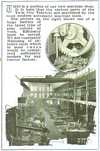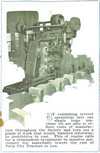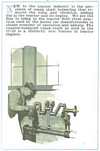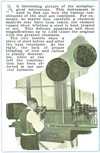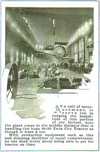
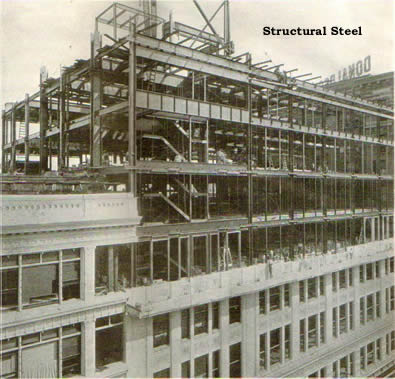
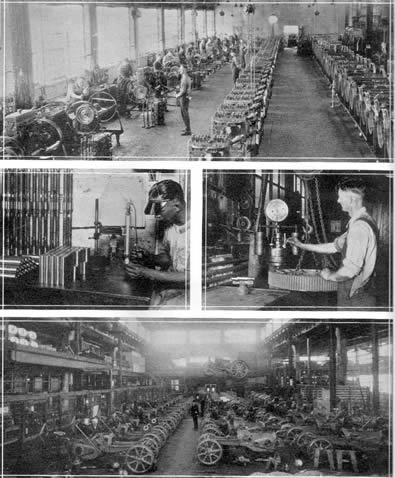
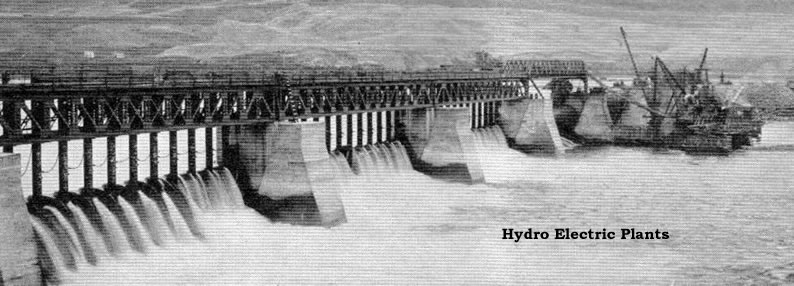
MS&MC experienced steady growth with machinery and steel products until World War 1 put 98% of the plant into production of shells, gun carriages, ammunition hoists and motor trucks.
At this time, tractor manufacturing contracts for other companies were abandoned. As the War efforts tapered off, production of the company’s tractor program and steel products resumed. In 1919, a line of Twin City threshing machines was unveiled. These were the first all steel threshers to be made or marketed in America. 1920 and 1921 were years of painful depression and the railways all across America had deteriorated dramatically. To offset the drop in the company’s production, MS&MC negotiated large repair contracts with several Twin City railroads. Under this clever plan, one third of the plant was converted into a profitable locomotive repair shop that could hold up to 25 units at a time. During this difficult time frame, tractor and structural steel production was barely maintained. Advertising literature from this period is scarce and virtually no photographs or documentation of the extensive locomotive renovation program have surfaced.
At this time, tractor manufacturing contracts for other companies were abandoned. As the War efforts tapered off, production of the company’s tractor program and steel products resumed. In 1919, a line of Twin City threshing machines was unveiled. These were the first all steel threshers to be made or marketed in America. 1920 and 1921 were years of painful depression and the railways all across America had deteriorated dramatically. To offset the drop in the company’s production, MS&MC negotiated large repair contracts with several Twin City railroads. Under this clever plan, one third of the plant was converted into a profitable locomotive repair shop that could hold up to 25 units at a time. During this difficult time frame, tractor and structural steel production was barely maintained. Advertising literature from this period is scarce and virtually no photographs or documentation of the extensive locomotive renovation program have surfaced.
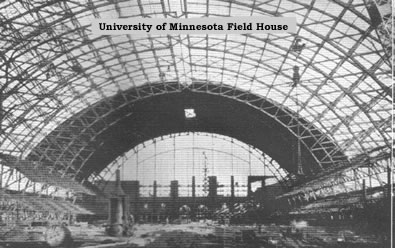
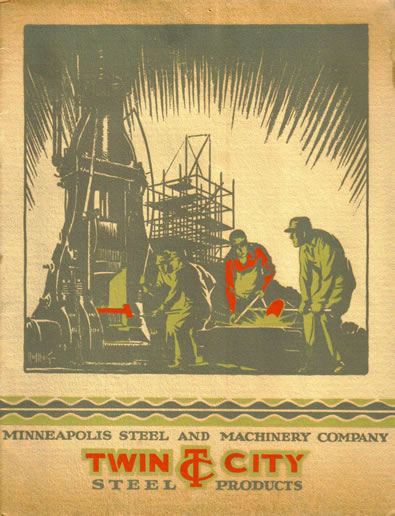
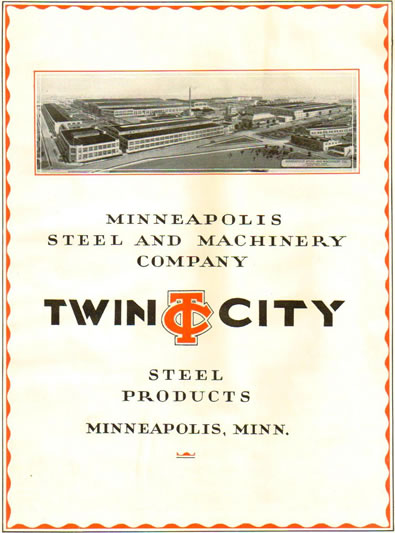
By 1925, MS&MC had returned to good profitable form. The company was making plans to add in a new tractor design and experiments with combine harvesters were under way. The company began to hold power farming schools each winter throughout broad sections of the expanding trade territory. Free instruction and information was given by the company’s own experts on the proper care and operation of Twin City power farming machinery. The structural steel program was booming again and by the late 20's much of the factory’s manufacturing equipment had been up-dated. Company products were distributed through factory branch houses in strategic locations all across the United States and Canada. The company’s products were distributed through twenty-one foreign ports, and thirty-five branches of agency connections. This allowed England, Australia, New Zealand, South America, South Africa, Egypt and several European countries to be steady buyers.
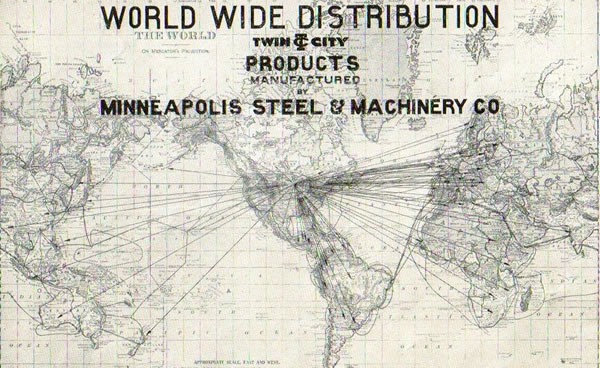
**Click on photos below to bring up larger image**
Email for more info or comments: loveoldjunk@gmail.com
Home | Heavy Weights | 20th Century | 16-30 | 12-20 | 20-35 | 17-28 | 27-44
21-32 | MT | KT | JT | Trucks | Experimentals | Factory Options
Serial Numbers | Collectibles | Links/Credits | Paint/Decals | TC Steel
© Pioneer Productions 2010
